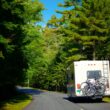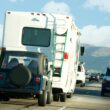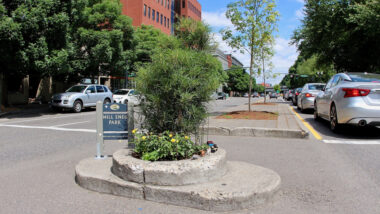Table of Contents Show
Are you looking for tips for driving your RV through a mountain pass or other challenging terrain? If so, you’re in luck!
It didn’t take us long to discover the challenges of driving an RV through the mountains. Luckily, we quickly learned and lived to tell about it.
Today, we’re sharing our best RV mountain driving tips to help you increase your confidence behind the wheel.
Buckle up, and let’s get started!
Is Driving an RV in the Mountains Hard?
Driving an RV in the mountains increases the difficulty of any already challenging task. No matter the size of your rig, maneuvering is typically no walk in the park. If you’re new to driving a larger vehicle, it can increase your heart rate and induce anxiety.
The steep inclines, rapid descents, and winding roads can test your skills and nerves. Successfully navigating them will require your full attention. However, it’s not just the driver you must worry about; your vehicle can take quite a beating, too.
Going up and down in elevation can push the capabilities of your vehicle. Climbing in elevation will cause your engine and transmission to work harder.
After conquering the mountain, you’ll then have to worry about making it safely to the bottom. In extreme cases, you may need to find a safe place to let your vehicle rest before pushing it past its limits.
Dangers of RV Mountain Driving
You must be aware of several dangers when driving an RV through the mountains. Let’s look at some of the most common dangers drivers encounter when going up and down in elevation.
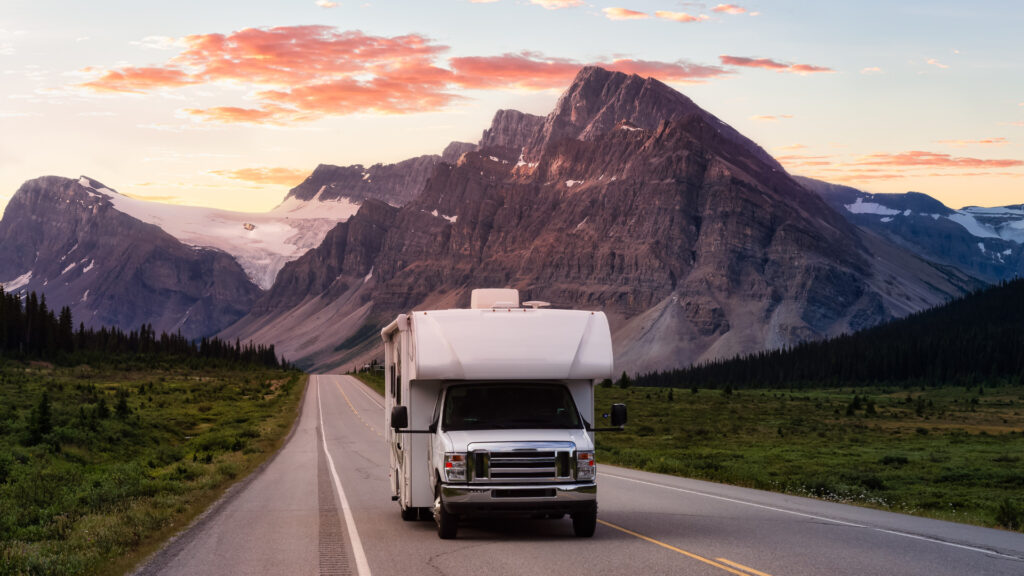
Steep Grades
The steep grades are among the most dangerous parts of conquering a mountain. As mentioned, your engine and transmission can get quite the workout.
You must be mindful of your acceleration and shifting gears to avoid overheating or stalling. However, the situation changes on the descent as gravity comes into play.
Typically, the larger the rig, the more it will weigh. The increased weight and the decline in grade results in increased acceleration. Some drivers must rely on their brake system to control their speed and avoid losing control. However, this can stress the components tremendously and cause them to overheat or fail.
Conquering steep grades can be exhausting for the driver. You must be aware of many things happening around you and how your vehicle responds. Sometimes you may be the one that needs to pull over and take a break instead of your vehicle.
Brake Failures
As we just discussed, brake failures can be dangerous when navigating mountains. If you push your brakes to the max, you significantly increase the chances of failure.
You may press the brakes and discover there’s nothing left. These can have catastrophic consequences, especially if you can’t reach a runaway ramp.
Runaway ramps are the long pits that large vehicles can use if they become out of control. While it may not be a smooth or comfortable stop, it’s better than the alternative. However, you should expect to receive a costly repair and recovery bill soon.
Overheating
Like your brakes have a limit, so do your engine and transmission. Hauling a heavy load up steep inclines at high altitudes can cause tremendous strain. It’s a good idea to monitor the temperature gauges for your engine and the transmission. You can seriously damage the engine and other components if you’re not careful.
The ascents require increased engine power. You likely won’t experience issues with small hills or shorter climbs. However, some of the most intense situations can feel like they go on forever. The increased stress and load combined with thinner air at higher altitudes can make it difficult for components to stay cool.
Weather Conditions
A final common danger of RV mountain driving is the weather conditions. Many drivers overlook that they’re climbing thousands of feet in elevation. If you’ve never experienced this, the weather conditions can change as you climb higher.
Unfortunately, just because they’re clear when you start the climb doesn’t mean they will be when you reach the top.
Many get caught off guard because visibility can change in the blink of an eye. Fog, rain, snow, and low-hanging clouds can create a very hazardous situation. If you thought navigating winding roads was tough before, doing it with reduced visibility may cause you to throw in the towel.
Keep in Mind: We don’t recommend driving your RV at night, but sometimes you have to. Before you get behind the wheel, check out these Safety Tips for Driving an RV at Night!
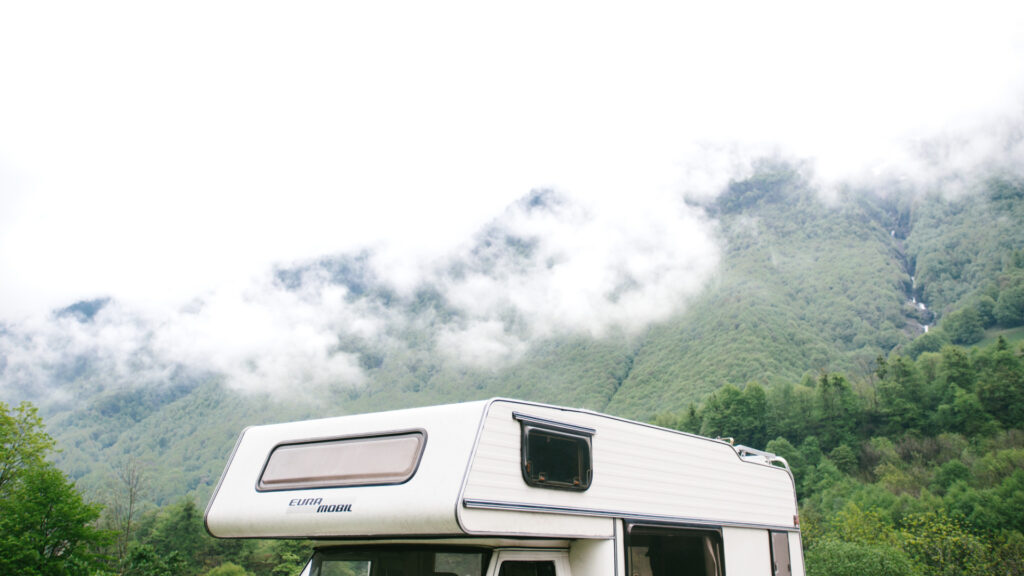
RV Mountain Driving Tips You Need to Know
Ready to hit the road? Don’t do so without first reading our RV mountain driving tips. They’ll help you have a smooth journey and confidently conquer the road.
Plan Your Route
One of the first things many RVers learn is the importance of planning their route. If you don’t have the proper equipment or aren’t comfortable driving through mountains, plan accordingly. This may add hours or days to your trip, but it’s always better to be safe than sorry.
We use RV Trip Wizard to help plan routes during our adventures. While we’re confident in our abilities and equipment, knowing what to expect for terrain is helpful. You don’t want a mountain pass to catch you by surprise.
By planning your route, you can strategically plan your stops along the way. This can help ensure you and your vehicle are ready to conquer the pass confidently. Taking a break can help you maintain focus and energy and keep your vehicle operating efficiently.
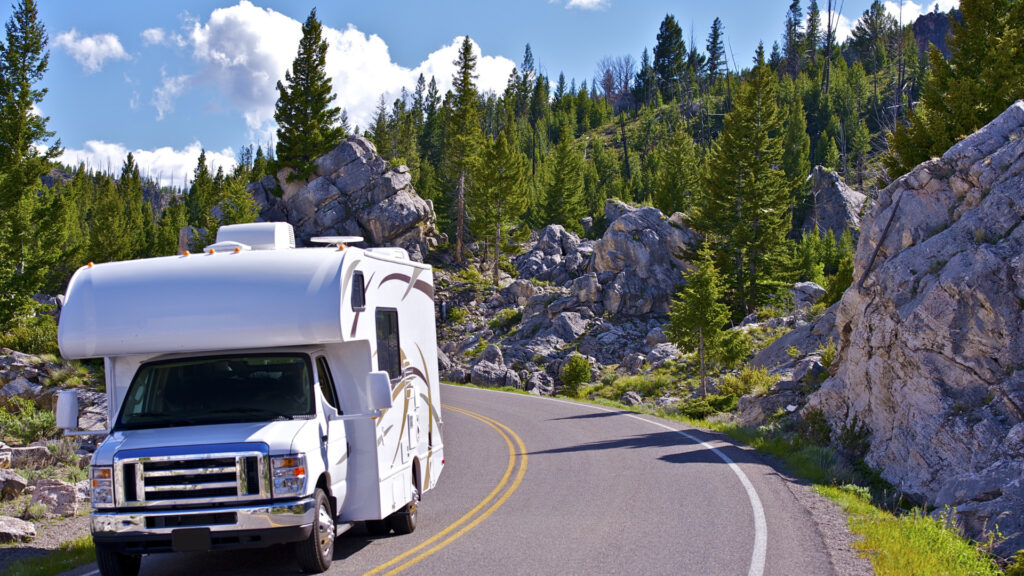
Check Road Conditions
One of the best RV mountain driving tips is to check the road conditions. Experts estimate that temperatures typically drop around five degrees for every 1,000 feet of elevation gain. Some mountain passes can require you to climb several thousand feet. The weather at the top will likely be very different than at the bottom.
You must adapt your driving style and speed to match the road conditions. If inclement weather or closures are ahead, find someplace safe to hunker down and wait out the storm. However, it’s not just weather that you have to worry about.
Road construction and accidents can cause delays and complicate your travels. While you may be unable to do anything about these, it’s good to know they’re coming. If you’re going to experience a delay, it’s at least good to have a warning.
Maintain a Safe Speed
Another important tip for driving an RV in the mountains is maintaining speed. Speed typically isn’t a problem when going up, but it becomes a problem when coming down. Be proactive about your speed. You’re not doing yourself or your brakes any favors if you wait until you’re going too fast.
Gravity will force you and your rig down the mountain, and you’ll gain speed quickly. Use lower gears and an engine brake if your vehicle has it. These are great ways of assisting your brakes so they don’t get too hot.
Keep in Mind: Do RVs have a different speed limit than regular vehicles? Let’s find out!
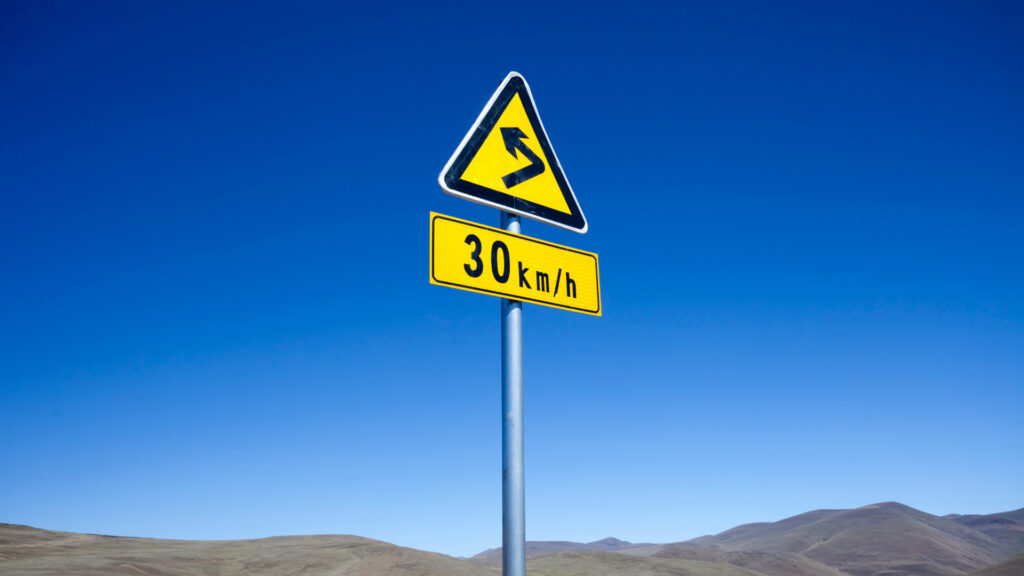
Have the Right Equipment
Unfortunately, one mistake we see many RVers make is trying to tackle mountains without the right equipment. If you’re towing, your vehicle needs to be able to handle the load.
Not only does it need to be able to haul it, but it also needs to be able to stop it. Bigger trucks have more capable engines and brakes, too.
You can damage your vehicle if you try to navigate mountainous terrain without the right equipment. Additionally, you can put yourself and others in an unsafe situation. Know your equipment and its capabilities.
Inspect Your Rig
We always recommend thoroughly inspecting your rig before hitting the road. However, this inspection is critical if your route takes you and your RV through the mountains. You want to know that your vehicle and RV are up for the challenge.
You should check your tires, brakes, and other essential components. Everything needs to be in good working order. If your vehicle is due for an oil change or any other maintenance, get it done beforehand. You want your rig to be in the best possible condition to conquer the steep grades, winding roads, and challenging conditions.
This is also a great time to check your brake lights, turn signals, and headlights. These essential components can keep you, your rig, and other travelers safe. Don’t rush through the inspection, or you may miss something. It’s a task that deserves your full attention and effort.
Conquer RV Mountain Driving
Our RV mountain driving tips can help you be a safe and confident driver. If you’re not careful, you could put yourself, your fellow passengers, and your precious rig into an unsafe situation.
However, the more you can navigate these routes, the more you can develop your skills. So don’t let a mountain pass or two stop you from creating unforgettable memories with your loved ones.
Do you have any other tips for driving an RV in the mountains?
